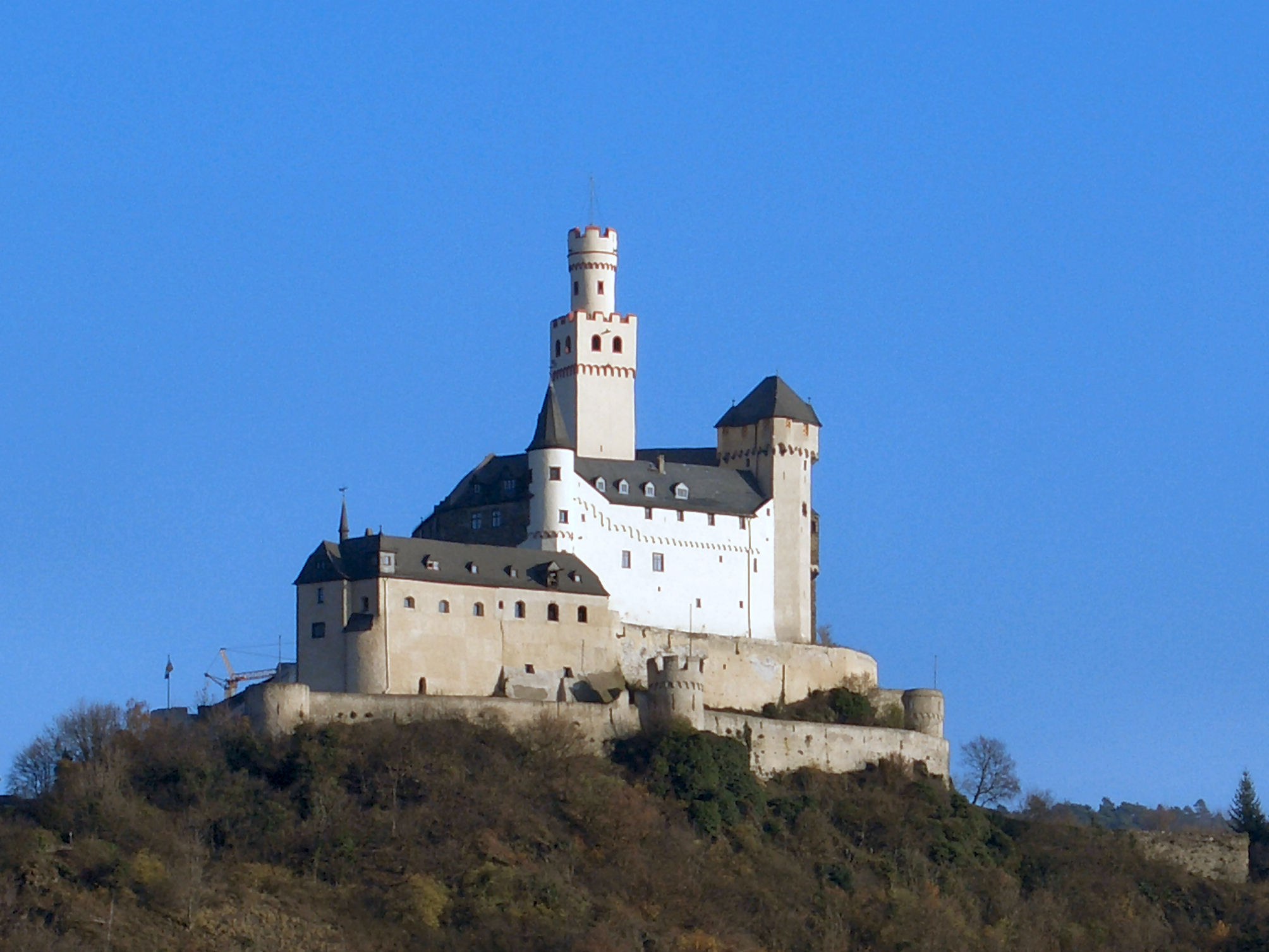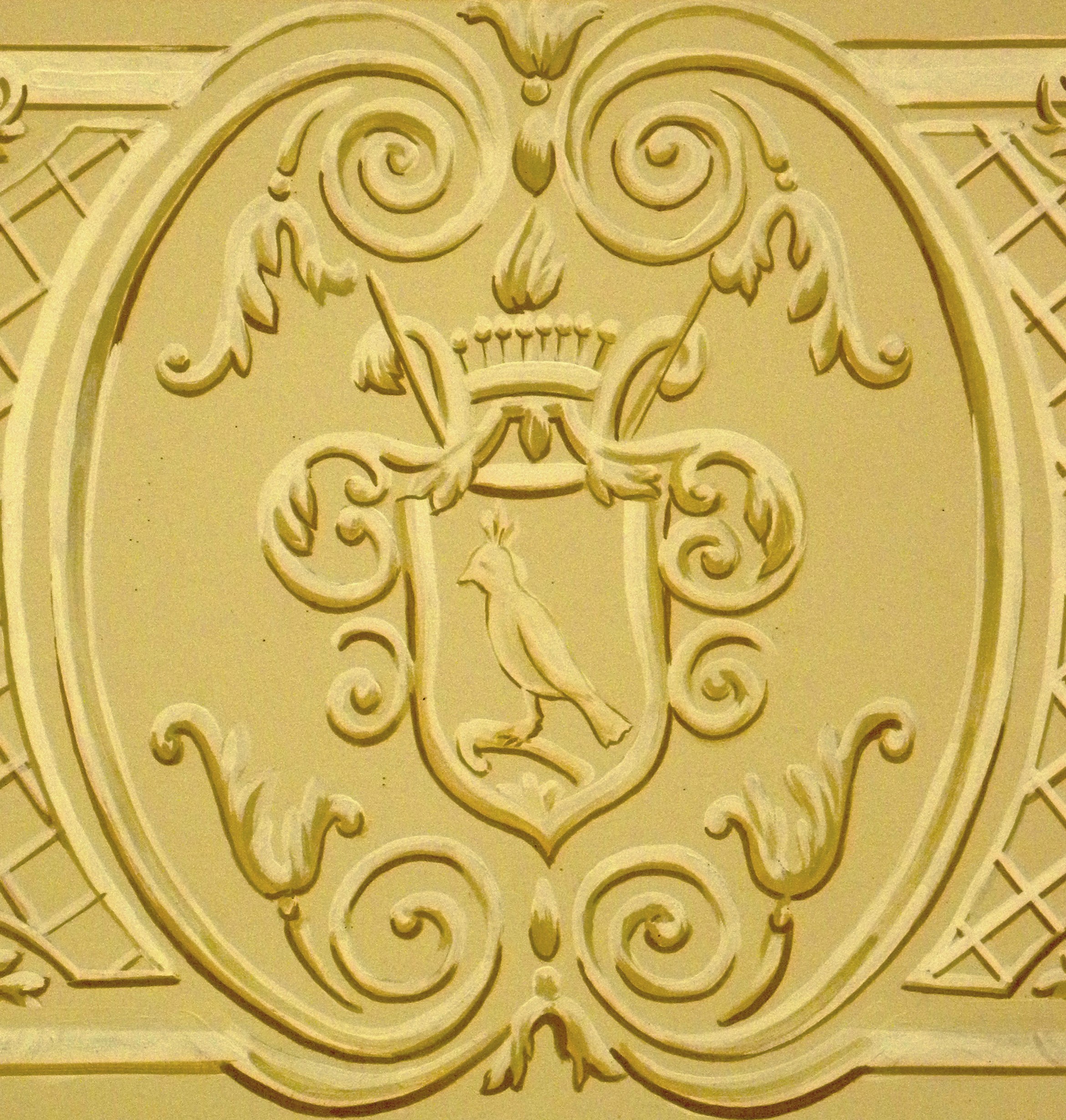|
Alexander, Prince Zu Sayn-Wittgenstein-Sayn
Alexander Konrad Friedrich Heinrich Prince zu Sayn-Wittgenstein-Sayn,Genealogisches Handbuch des Adels, Fürstliche Häuser XIX. "Sayn-Wittgenstein". C.A. Starke Verlag, 2011, pp. 331-333. (German). . (born 22 November 1943 in Salzburg, Austria), a German businessman, is head of the Princely House Sayn-Wittgenstein-Sayn. Biography He was born in Salzburg as the first son of Ludwig, 6th Prince zu Sayn-Wittgenstein-Sayn (1915–1962) and his wife Baroness Marianne von Mayr-Melnhof (born 1919). Following Prince Ludwig's death in 1962, Alexander succeeded as head of the princely house and, by tradition, as the 7th Prince (German: ''Fürst)'' zu Sayn-Wittgenstein-Sayn. Ancestry Alexander is a descendant of James II of England and his illegitimate son James Fitzjames, 1st Duke of Berwick, through his father's grandmother Marie Auguste Yvonne de Blacas d'Aulps, daughter of Louis, Duke of Blacas. Later life Prince Alexander is vice president of Europa Nostra and president of Europa N ... [...More Info...] [...Related Items...] OR: [Wikipedia] [Google] [Baidu] |
Sayn-Wittgenstein-Sayn
Sayn-Wittgenstein-Sayn was a county of Rhineland-Palatinate, Germany, comprising the lands of the region of Sayn. It was created as a partition of Sayn-Wittgenstein in 1607, although it was not until the next year that it obtained fully the Countship of Sayn. The succession was never clear, leading to the annexation of the county in 1623 by the Archbishop of Cologne. It was not until a treaty in 1648 (at the end of the Thirty Years' War) that it was decided the county would pass to the sisters Ernestine and Johanette of Sayn-Wittgenstein-Sayn, under the regency of their mother Countess Louise Juliane von Erbach (1603–1670). They partitioned the county into Sayn-Wittgenstein-Sayn-Altenkirchen and Sayn-Wittgenstein-Hachenburg soon after. Count of Sayn-Wittgenstein-Sayn, First Creation * William III (ruled from 1607–1623), third son of Count Ludwig von Sayn-Wittgenstein; married Anna Elisabeth von Sayn, the niece and heiress of Henry IV, Count of Sayn-Sayn. Counts of ... [...More Info...] [...Related Items...] OR: [Wikipedia] [Google] [Baidu] |
Don (honorific)
Don (; ; pt, Dom, links=no ; all from Latin ', roughly 'Lord'), abbreviated as D., is an honorific prefix primarily used in Spain and Hispanic America, and with different connotations also in Italy, Portugal and its former colonies, and Croatia. ''Don'' is derived from the Latin ''dominus'': a master of a household, a title with background from the Roman Republic in classical antiquity. With the abbreviated form having emerged as such in the Middle Ages, traditionally it is reserved for Catholic clergy and nobles, in addition to certain educational authorities and persons of distinction. ''Dom'' is the variant used in Portuguese. The female equivalent is Doña (), Donna (), Doamnă (Romanian) and Dona () abbreviated D.ª, Da., or simply D. It is a common honorific reserved for women, especially mature women. In Portuguese "Dona" tends to be less restricted in use to women than "Dom" is to men. In Britain and Ireland, especially at Oxford, Cambridge, and Dublin, the word is us ... [...More Info...] [...Related Items...] OR: [Wikipedia] [Google] [Baidu] |
People From Salzburg
A person ( : people) is a being that has certain capacities or attributes such as reason, morality, consciousness or self-consciousness, and being a part of a culturally established form of social relations such as kinship, ownership of property, or legal responsibility. The defining features of personhood and, consequently, what makes a person count as a person, differ widely among cultures and contexts. In addition to the question of personhood, of what makes a being count as a person to begin with, there are further questions about personal identity and self: both about what makes any particular person that particular person instead of another, and about what makes a person at one time the same person as they were or will be at another time despite any intervening changes. The plural form "people" is often used to refer to an entire nation or ethnic group (as in "a people"), and this was the original meaning of the word; it subsequently acquired its use as a plural form of per ... [...More Info...] [...Related Items...] OR: [Wikipedia] [Google] [Baidu] |
1943 Births
Events Below, the events of World War II have the "WWII" prefix. January * January 1 – WWII: The Soviet Union announces that 22 German divisions have been encircled at Stalingrad, with 175,000 killed and 137,650 captured. * January 4 – WWII: Greek-Polish athlete and saboteur Jerzy Iwanow-Szajnowicz is executed by the Germans at Kaisariani. * January 11 ** The United States and United Kingdom revise previously unequal treaty relationships with the Republic of China (1912–1949), Republic of China. ** Italian-American anarchist Carlo Tresca is assassinated in New York City. * January 13 – Anti-Nazi protests in Sofia result in 200 arrests and 36 executions. * January 14 – January 24, 24 – WWII: Casablanca Conference: Franklin D. Roosevelt, President of the United States; Winston Churchill, Prime Minister of the United Kingdom; and Generals Charles de Gaulle and Henri Giraud of the Free French forces meet secretly at the Anfa Hotel in Casablanca, Morocco, to plan the ... [...More Info...] [...Related Items...] OR: [Wikipedia] [Google] [Baidu] |
Sovereign Military Order Of Malta
The Sovereign Military Order of Malta (SMOM), officially the Sovereign Military Hospitaller Order of Saint John of Jerusalem, of Rhodes and of Malta ( it, Sovrano Militare Ordine Ospedaliero di San Giovanni di Gerusalemme, di Rodi e di Malta; la, Supremus Militaris Ordo Hospitalarius Sancti Ioannis Hierosolymitani Rhodiensis et Melitensis), commonly known as the Order of Malta or Knights of Malta, is a Catholic lay religious order, traditionally of a military, chivalric, and noble nature. Though it possesses no territory, the order is often considered a sovereign entity of international law, as it maintains diplomatic relations with many countries. The Order claims continuity with the Knights Hospitaller, a chivalric order that was founded about 1099 by the Blessed Gerard in the Kingdom of Jerusalem. The order is led by an elected prince and grand master. Its motto is (''defence of the faith and assistance to the poor''). The Order venerates the Virgin Mary as its patrone ... [...More Info...] [...Related Items...] OR: [Wikipedia] [Google] [Baidu] |
Order Of Merit Of The Federal Republic Of Germany
The Order of Merit of the Federal Republic of Germany (german: Verdienstorden der Bundesrepublik Deutschland, or , BVO) is the only federal decoration of Germany. It is awarded for special achievements in political, economic, cultural, intellectual or honorary fields. It was created by the first President of the Federal Republic of Germany, Theodor Heuss, on 7 September 1951. Colloquially, the decorations of the different classes of the Order are also known as the Federal Cross of Merit (). It has been awarded to over 200,000 individuals in total, both Germans and foreigners. Since the 1990s, the number of annual awards has declined from over 4,000, first to around 2,300–2,500 per year, and now under 2,000, with a low of 1752 in 2011. Since 2013, women have made up a steady 30–35% of recipients. Most of the German federal states (''Länder'') have each their own order of merit as well, with the exception of the Free and Hanseatic Cities of Bremen and Hamburg, which rejec ... [...More Info...] [...Related Items...] OR: [Wikipedia] [Google] [Baidu] |
Order Of Merit Of Rhineland-Palatinate
The Order of Merit of Rhineland-Palatinate (german: Verdienstorden des Landes Rheinland-Pfalz) is a civil order of merit, of the German State of Rhineland-Palatinate. The order is presented for outstanding service to the state and people of Rhineland-Palatinate. It was founded on 2 October 1981, and first awarded in 1982. The order is limited to 800 living recipients. Through 2012, the order had been awarded 1035 times. References Rhineland-Palatinate Rhineland-Palatinate Rhineland-Palatinate ( , ; german: link=no, Rheinland-Pfalz ; lb, Rheinland-Pfalz ; pfl, Rhoilond-Palz) is a western state of Germany. It covers and has about 4.05 million residents. It is the ninth largest and sixth most populous of the ... Culture of Rhineland-Palatinate {{Odm-stub ... [...More Info...] [...Related Items...] OR: [Wikipedia] [Google] [Baidu] |
German Castles Association
The German Castles Association (german: Deutsche Burgenvereinigung) or DBV is dedicated to the conservation of historic defensive and residential buildings as witnesses of history and culture and has its headquarters at Marksburg Castle above Braubach on the Rhine. It owns the organisation known as the European Castles Institute (''Europäisches Burgeninstitut'') or (EBI) whose library and archives are housed in Philippsburg Palace in Braubach. Entries in the castles inventory database EBIDAT See also * Schweizerischer Burgenverein ''Schweizerischer Burgenverein'' is a Swiss voluntary association dedicated to the study and preservation of medieval castles in Switzerland. Established in 1927 as ''Schweizerische Vereinigung zur Erhaltung der Burgen und Ruinen'' ("Swiss associa ... * Südtiroler Burgeninstitut References External links Website of the DBV''Burgen and Schlosser'', Journal of the Deutsche Burgenvereinigung, archiveDatabank of the European Castle Insti ... [...More Info...] [...Related Items...] OR: [Wikipedia] [Google] [Baidu] |
Palazzo Spannocchi
The Palazzo Spannocchi is a Renaissance style urban palace located on the Piazza Salimbeni, just off Via Banchi di Sopra in the Terzo di Camollia of the city of Siena, region of Tuscany, Italy. The building was associated with an ancient mercantile family of Siena. History It was built in 1473 by Ambrogio Spannocchi, adjacent to the Gothic Palazzo Salimbeni and faces the Mannerist Renaissance Palazzo Tantucci. Spannocchi had been named Treasurer to Pope Pius II of the Sienese Piccolomini Family. The design and construction was entrusted to the Florentine Giuliano da Maiano. The facade closely parallels the Palazzo Medici Riccardi of Florence built a few decades prior. The sober facade, of smooth stone, has three stories, with mullioned windows with round arches on the second floor. Unlike earlier Gothic palaces, which often afforded transient wooden scaffolds for either balconies or awnings, this palace has a solid protruding ceiling cornice near the roofline with classical bu ... [...More Info...] [...Related Items...] OR: [Wikipedia] [Google] [Baidu] |
Corinna Zu Sayn-Wittgenstein
Corinna zu Sayn-Wittgenstein-Sayn (''née'' Larsen; born 28 January 1965) is a German-born Danish entrepreneur. Early life Corinna Larsen was born on 28 January 1964 in Frankfurt, Germany to a German mother, Ingrid Sauer, and a Danish father, Finn Bønning Larsen. Her father, born in 1920 in Ballerup, Denmark, was the European Director of Varig, the national airline of Brazil, from 1961 until 1991. Larsen is a Danish national by right of birth. She was raised in Frankfurt, Rio de Janeiro, and Switzerland, and graduated from the University of Geneva in 1987. Career She began her career at L'Oréal before moving on to a public relations role at Compagnie Générale des Eaux. Boss Sporting From 2000 until 2006, she organized rare animal hunts at Boss Sporting, a subsidiary of the London based gun-making firm Boss & Co. It was in this capacity that she was introduced to Juan Carlos I of Spain by Gerald Grosvenor, 6th Duke of Westminster in 2004. The King of Spain subsequent ... [...More Info...] [...Related Items...] OR: [Wikipedia] [Google] [Baidu] |
Hunyady De Kéthely
The House of Hunyady de Kéthely (german: Hunyady von Kéthely) is an Austro-Hungarian noble family whose members occupied important positions in the Empire. Their coat of arms was recognized in 1792 when the family received the title of Count in Hungary and in 1797 when they received the title of Imperial Count from Emperor Francis II. Although with the same name the family was not connected to Hunyadi family which ruled in Hungary in the 15th and the beginning of the 16th century. Members *Ferenc Hunyady de Kéthely (d. 1690), count ** László Hunyady de Kéthely (d. 1723), count *Franciscus Hunyady de Kéthely ( 1727), count *Joseph Hunyady von Kéthely ( 1808), count, chamberlain, ''obersthofmeister'' *Joseph Hunyady ( 1825–37), count *Ferenc Hunyady de Kéthely, count **László **Kálmán (1828–1901), count **Vilmos ** Júlia (1831–1919), firstly Princess of Serbia, secondly Duchess of Arenberg Arenberg, also spelled as Aremberg or Ahremberg, is a former coun ... [...More Info...] [...Related Items...] OR: [Wikipedia] [Google] [Baidu] |

_1938.jpg)



